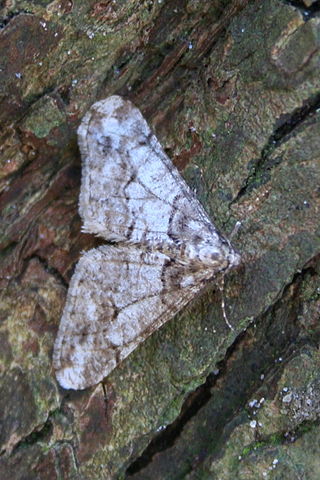
Agriopis leucophaearia, the spring usher, is a moth of the family Geometridae. The species was first described by Michael Denis and Ignaz Schiffermüller in 1775. It is a Palearctic species found from Europe to the Russian Far East, Siberia and Japan, mainly in oak forests and in heathland with low-growing oaks.

Acleris sparsana is a moth of the family Tortricidae found in Europe and Iran. It was first described in 1775 by the Austrian lepidopterists Michael Denis and Ignaz Schiffermüller.
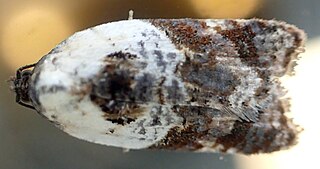
Acleris variegana, the garden rose tortricid moth or fruit tortricid, is a moth of the family Tortricidae. It has a Palearctic distribution. The moth flies from July to September mainly at night and is attracted to bright lights. The larvae feed on various trees and shrubs including rose and apple.

Argyresthia pygmaeella is a moth of the family Yponomeutidae. The species was first described by Michael Denis and Ignaz Schiffermüller in 1775 from a specimen found near Vienna, Austria

Agriphila tristella, the common grass-veneer, is a species of moth of the family Crambidae found in Europe and Asia.

Anania lancealis is a species of moth of the family Crambidae, described by the Austrian lepidopterists Michael Denis and Ignaz Schiffermüller in 1775. The moth is found in Asia and Europe.
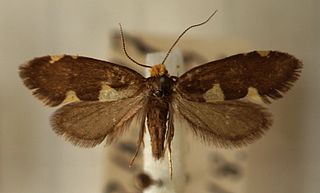
Incurvaria oehlmanniella is a moth of the family Incurvariidae. It is found in Europe and across the Palearctic to eastern Siberia.

Incurvaria pectinea is a moth of the family Incurvariidae. It is found in Europe.

Anania fuscalis is a species of moth of the family Crambidae. It is found in Europe.

Scoparia pyralella, the meadow grey, is a species of moth of the family Crambidae. It was first described by Michael Denis and Ignaz Schiffermüller in 1775.

Phylloporia bistrigella is a moth of the family Incurvariidae. It is found in western, northern and central Europe and north-eastern North America.
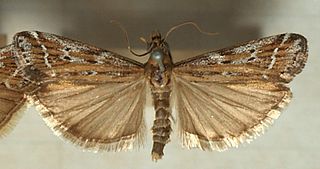
Pempeliella ornatella is a moth of the family Pyralidae described by Michael Denis and Ignaz Schiffermüller in 1775. It is found in most of Europe, east to the Ural, Siberia, central Yakutia and Kyrgyzstan.

Ochsenheimeria taurella, the Liverpool feather-horn or the rye stem borer, is a moth of the family Ypsolophidae.

Incurvaria praelatella is a moth of the family Incurvariidae. It is found in all of Europe, except the Iberian Peninsula.

Nemophora minimella is a moth of the Adelidae family. It is found in most of Europe, except Estonia, Ukraine, Slovenia, Switzerland and Portugal.

Delplanqueia dilutella is a species of moth in the family Pyralidae. It was described by Michael Denis and Ignaz Schiffermüller in 1775. It is found in most of Europe, east to Russia, Turkey, Iran and Mongolia.
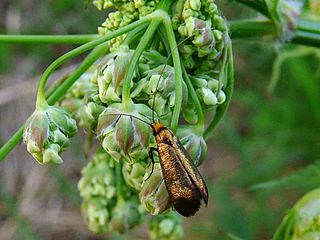
Adela cuprella is a moth of the family Adelidae and are found in most of Europe. It was first described by Michael Denis & Ignaz Schiffermüller in 1775 and the type locality is from Austria. They can be found flying around sallows (Salix) species during the day in April and May.
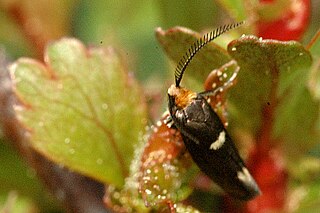
Incurvaria is a genus of moths of the family Incurvariidae.
Aristotelia leonhardi is a moth of the family Gelechiidae. It is known from Austria.

Eulamprotes atrella, the two-spotted neb, is a moth of the family Gelechiidae. It was described by Michael Denis and Ignaz Schiffermüller in 1775. It is found from most of Europe, east to Japan. The habitat consists of mixed deciduous woodlands.






















